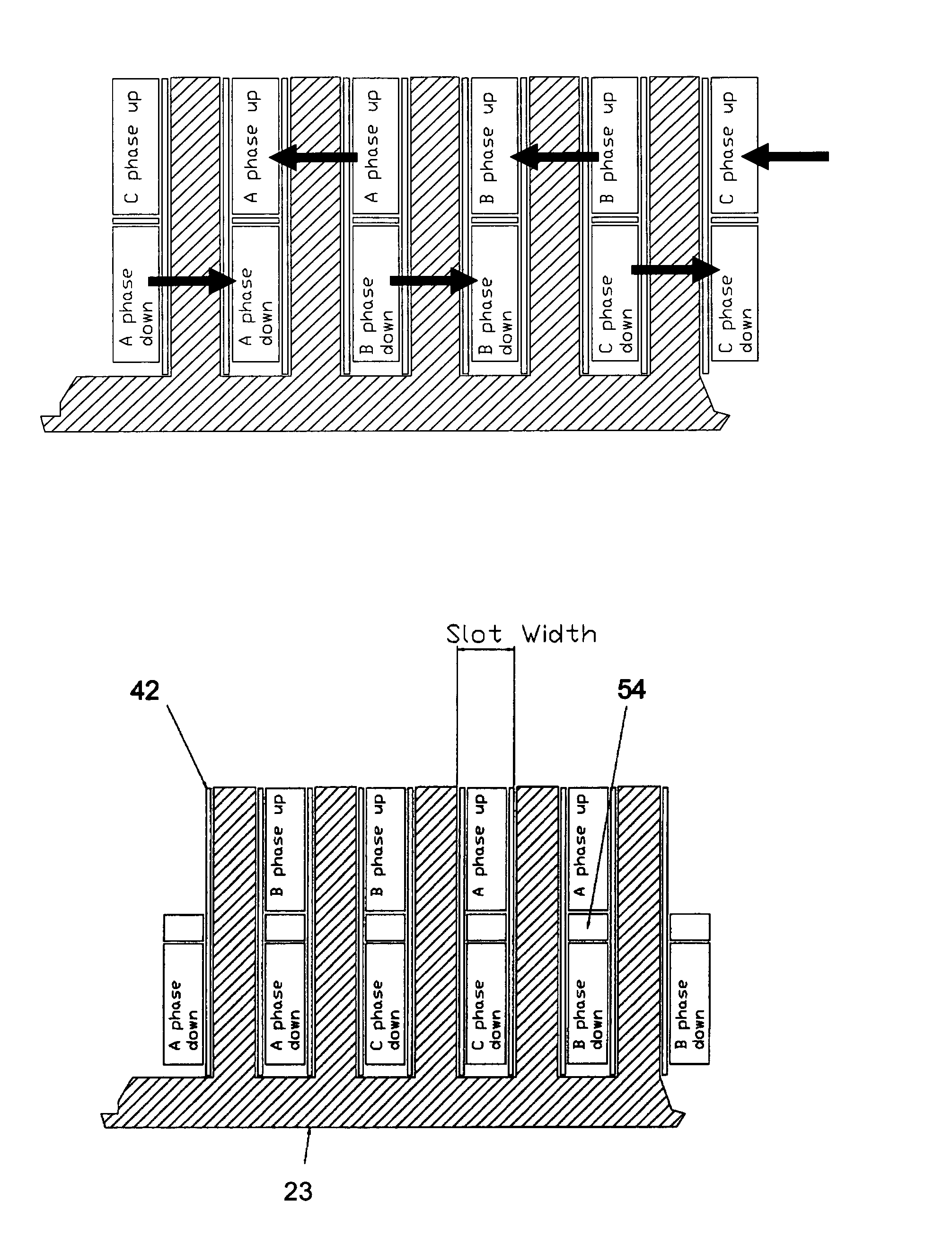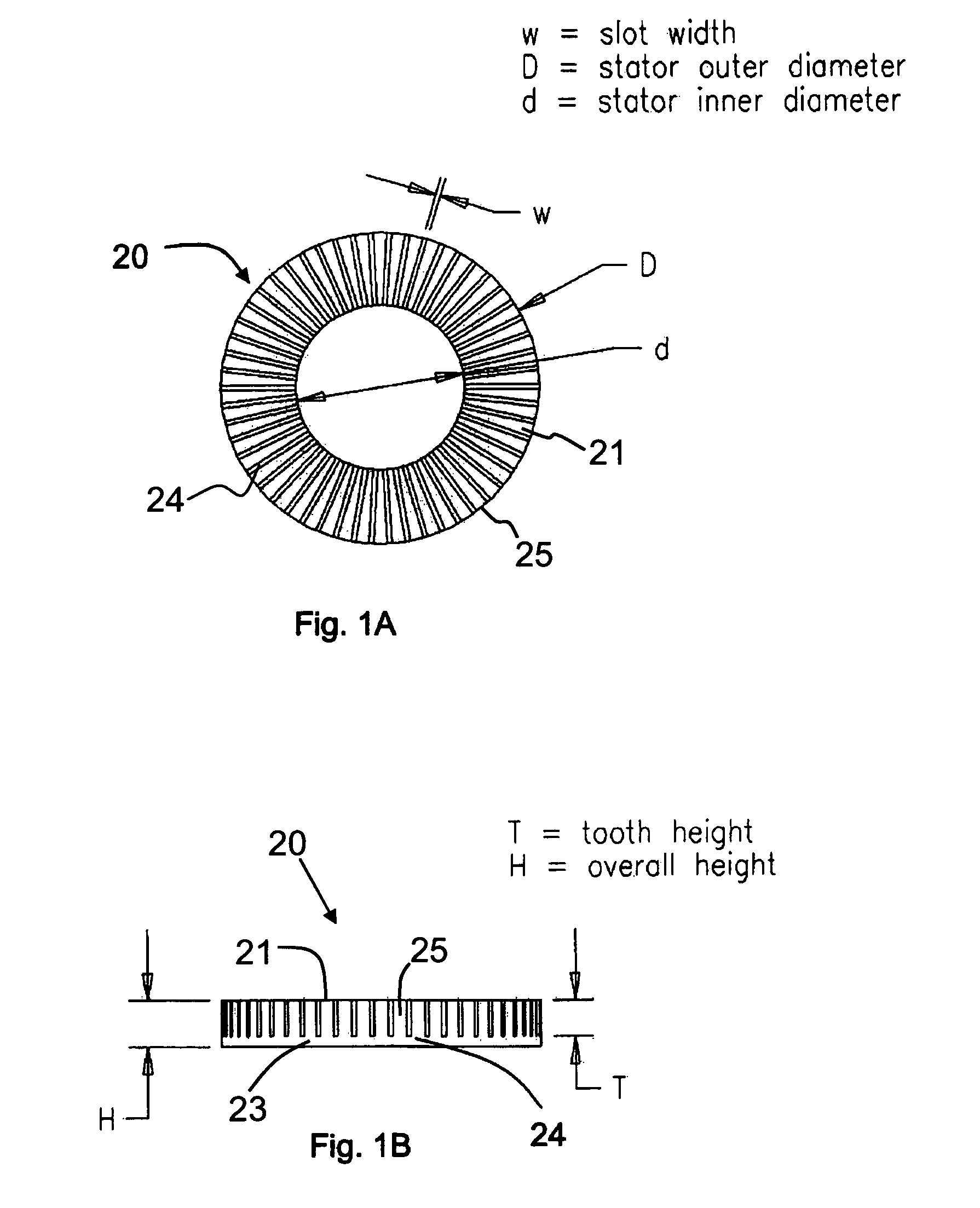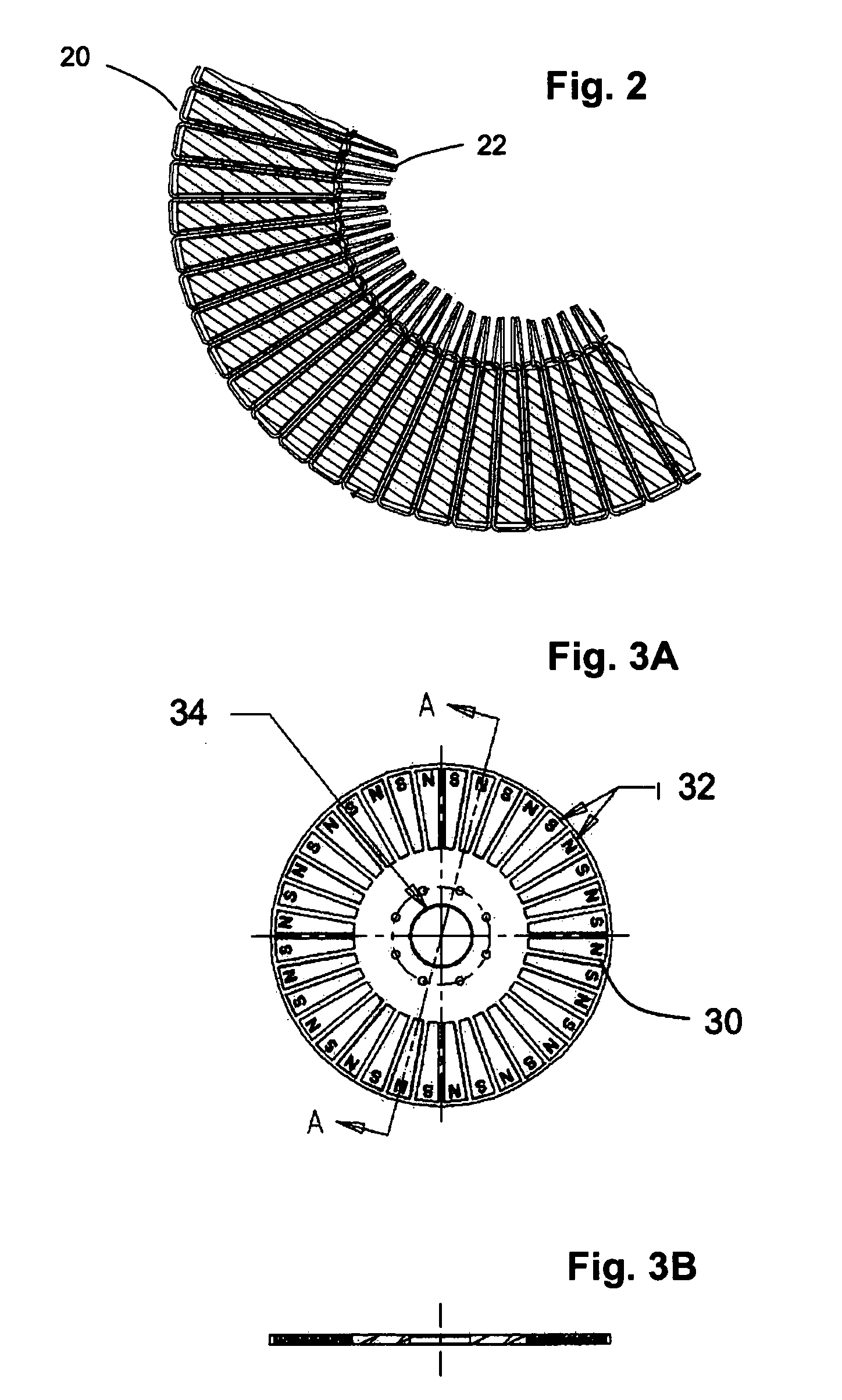Stator coil arrangement for an axial airgap electric device including low-loss materials
a technology of axial air gap and stator coil, which is applied in the direction of magnetic circuits characterised by magnetic materials, magnetic circuit shapes/forms/construction, magnetic circuit rotating parts, etc., can solve the problems of low success rate of axial or radial air gap machines, difficult or impossible to directly substitute ordinary steels in conventionally designed motors, and previous attempts at incorporating amorphous materials into conventional radial or axial air gap machines have been largely unsuccessful commercially,
- Summary
- Abstract
- Description
- Claims
- Application Information
AI Technical Summary
Benefits of technology
Problems solved by technology
Method used
Image
Examples
Embodiment Construction
[0036]Preferred embodiments of the present invention will be explained in greater detail hereinafter, with reference to the accompanying drawings. The present invention involves the design and manufacture of an electric device, such as a brushless motor, having a wound stator core made from low-loss material and employing stacked stator windings. Preferably the stator core includes amorphous metals, nanocrystalline metals, optimized Si—Fe alloys, grain-oriented Fe-based materials or non-grain-oriented Fe-based materials.
[0037]General Device Structure
[0038]Commonly assigned U.S. Provisional Application Ser. No. 60 / 444,271 (“the '271 application”) and U.S. patent application Ser. No. 10 / 769,094 (“the '094 application”), which are both incorporated herein in the entirety by reference thereto, provide an electric device having a rotor assembly and a stator arranged in an axial airgap configuration, but with a side-by-side winding configuration. The stator includes a backiron section and...
PUM
 Login to View More
Login to View More Abstract
Description
Claims
Application Information
 Login to View More
Login to View More - R&D
- Intellectual Property
- Life Sciences
- Materials
- Tech Scout
- Unparalleled Data Quality
- Higher Quality Content
- 60% Fewer Hallucinations
Browse by: Latest US Patents, China's latest patents, Technical Efficacy Thesaurus, Application Domain, Technology Topic, Popular Technical Reports.
© 2025 PatSnap. All rights reserved.Legal|Privacy policy|Modern Slavery Act Transparency Statement|Sitemap|About US| Contact US: help@patsnap.com



